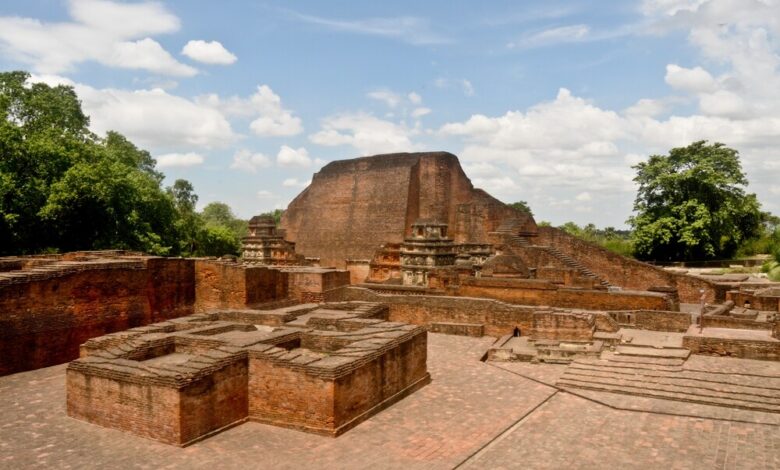Nalanda: The World’s Greatest Centre of Learning in Ancient Times
Nalanda flourished under the patronage of the Gupta Empire in the 5th and 6th centuries

Nalanda is considered the world’s first residential university. It was perhaps the greatest centre of learning in ancient times. Nalanda University was home to nine million books and attracted over 10,000 students from around the world, more than 500 years before Oxford University was founded. The University engaged in the organized transmission of knowledge over an uninterrupted period of 800 years. Its systems of pedagogy, administration, planning and architecture were the basis on which later Mahaviharas were established.
Archaeological Site of Nalanda Mahavihara
Nalanda was an acclaimed Mahavihara, a large Buddhist monastery in the ancient kingdom of Magadha (modern-day Bihar) in India. The site is located about 95 kilometres southeast of Patna near the town of Bihar Sharif, and was a centre of learning from the fifth century CE to1200 CE. It is a UNESCO World Heritage Site.
The highly formalized methods of Vedic learning helped inspire the establishment of large teaching institutions such as Taxila, Nalanda, and Vikramashila which are often characterised as India’s early universities. Nalanda flourished under the patronage of the Gupta Empire in the 5th and 6th centuries and later under Harsha, the emperor of Kannauj.The liberal cultural traditions inherited from the Gupta age resulted in a period of growth and prosperity until the ninth century. The subsequent centuries were a time of gradual decline, a period during which the tantric developments of Buddhism became most pronounced in eastern India under the Pala Empire.
Spread over an area of 23 hectares the Archaeological site of Nalanda Mahavihara presents remains dating from circa. 3rd Cen BCE with one of the earliest, the largest of its time and longest serving monastic cum scholastic establishment in Indian Subcontinent from 5th Cen CE – 13th Cen CE before the sack and abandonment of Nalanda in the 13th Century. It includes stupas, chaityas, viharas, shrines, many votive structures and important art works in stucco, stone and metal. The layout of the buildings testifies to the change from grouping around the stupa-chaitya to a formal linear alignment flanking an axis from south to north. The historic development of the property testifies to the development of Buddhism into a religion and the flourishing of monastic and educational traditions.
The property is owned, protected, maintained and managed by Archaeological Survey of India vide national level laws – the Ancient Monuments and Sites Remains Act of 1958 (Amendment and Validation, 2010) Decisions pertaining to its conservation and management are governed by National Conservation Policy for Monuments, Archaeological Sites and Remains promulgated by the Archaeological Survey of India.
Conservation and management of the property is ordained by a perspective plan and an annual conservation programme. An in-house committee of the Archaeological Survey of India monitors its state of conservation and conducts need-analysis.




